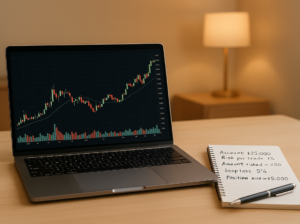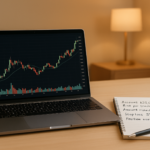What Is Average True Range
Respected trader and educator J. Welles Wilder developed “AverageTrueRange” (ATR) as a tool for a more precise and realistic calculation of market’s price activity and volatility.
The ATR is useful when calculating the directional movement of a market. Wilder defined the “TrueRange” of a market to be the greatest of the following periods:
-
The distance from the session’s high to its low.
-
The distance from the previous session’s close to the next session’s high.
-
The distance from the previous session’s close to the next session’s low.
A good example of a situation where TrueRange would be significantly larger than the normal daily trading range would be when price gaps occur on bar charts.
“TrueRange” measures market volatility and is an integral part of indicators such as ADX (Average Directional Movement) technical indicator, or several others, to identify the directional movement of a market. The ATR is the basic unit of measurement for Wilder’s Volatility System.
AverageTrueRange is a moving average of the TrueRange values over a period of time. The periods are the number of bars in a bar chart. If the chart displays daily data, then the period denotes days; in weekly charts, the period will stand for weeks, and so on. Wilder used a period of 7 for a default setting. Other common periods used are 14 and 20.
The AverageTrueRange indicator identifies periods of high and low volatility in a market. High volatility describes a market with ongoing price fluctuation; low volatility is used to define a market with smaller price range activity.
When a market becomes increasingly volatile the ATR tends to peak, rising in value. During periods of little volatility the ATR bottoms out, decreasing in value. A market will usually keep the direction of the initial price move, though this is certainly not a rule. Analysts, therefore, tend to use AverageTrueRange to measure market volatility and other technical indicators to help identify market direction.
Wilder has found that high ATR values often occur at market bottoms following a panic sell-off. LowAverageTrueRange values are often found during extended sideways periods, such as those found at tops and after consolidation periods.
Measuring market volatility can help in identifying buy and sell signals and, additionally, risk potential. Markets with high price fluctuation offer more short-term risk/reward potential, because prices rise and fall in a shorter timeframe.
Wilder has a book, “New Concepts in Technical Trading Systems,” where more information on TrueRange and the ATR indicator can be found











